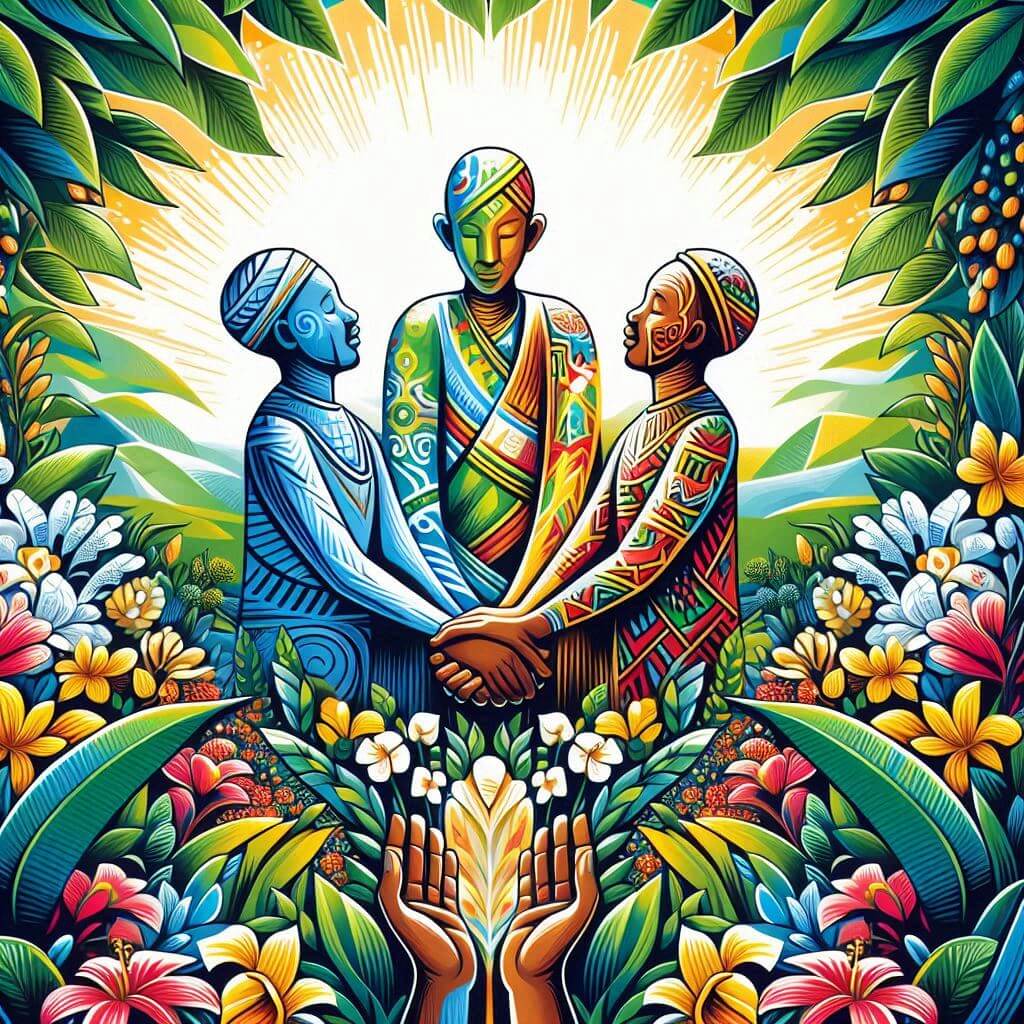The flag of Burundi is a distinctive and symbolic representation of the nation's history, culture, and aspirations. It features a white saltire (diagonal cross) dividing the field into four triangles: two red (top and bottom) and two green (hoist and fly sides). At the center of the flag is a white circle containing three red six-pointed stars, each outlined in green.
Burundi information
| National Flag Day | July 1 |
| Sovereign state | Yes |
| Official name | Republic of Burundi |
| Capital | Gitega |
| Population | 12,255,443 |
| Area | 27,830 km² |
| Currency | Burundian franc (BIF) |
| Language | Kirundi, French, English |
| Continent | Africa |
| Region | East Africa |
| Subregion | African Great Lakes |
| Borders | Rwanda, Tanzania, Democratic Republic of the Congo |
| Timezone | Central Africa Time (CAT) UTC+2 |
| Calling code | +257 |
| Top-level domain | .bi |
History of the Burundi Flag
 The current flag of Burundi was officially adopted on March 28, 1967, five years after the country gained independence from Belgium. The design was created to represent the new nation's identity and values, moving away from colonial symbols while incorporating elements of traditional Burundian culture.
Prior to independence, Burundi was part of the Belgian-administered territory of Ruanda-Urundi, which used a different flag. The adoption of the new flag marked a significant moment in Burundi's journey as an independent nation.
The flag's design has remained unchanged since its adoption, symbolizing continuity and stability in the face of the country's sometimes turbulent history.
The current flag of Burundi was officially adopted on March 28, 1967, five years after the country gained independence from Belgium. The design was created to represent the new nation's identity and values, moving away from colonial symbols while incorporating elements of traditional Burundian culture.
Prior to independence, Burundi was part of the Belgian-administered territory of Ruanda-Urundi, which used a different flag. The adoption of the new flag marked a significant moment in Burundi's journey as an independent nation.
The flag's design has remained unchanged since its adoption, symbolizing continuity and stability in the face of the country's sometimes turbulent history.
Symbolism and Design of the Burundi Flag
Every element of the Burundi flag is rich with symbolism:
- The red color symbolizes the struggle for independence and the blood shed in that cause. It also represents the nation's vitality and energy.
- The green color represents hope for the future and the country's lush, fertile landscape.
- The white color signifies peace, unity, and optimism for a harmonious future.
- The white saltire (diagonal cross) represents the country's commitment to peace and unity among its diverse population.
- The three six-pointed stars in the center represent the three main ethnic groups of Burundi: Hutu, Tutsi, and Twa. They are also said to represent the nation's motto: "Unité, Travail, Progrès" (Unity, Work, Progress).
- The circular shape containing the stars symbolizes the unity and continuity of the nation.
Usage and Significance of the Burundi Flag
 The flag of Burundi is a powerful symbol of national identity and pride. It is prominently displayed on government buildings, schools, and during official ceremonies and national celebrations. Key occasions for flag display include:
The flag of Burundi is a powerful symbol of national identity and pride. It is prominently displayed on government buildings, schools, and during official ceremonies and national celebrations. Key occasions for flag display include:
- Independence Day (July 1), commemorating Burundi's independence from Belgium in 1962
- Unity Day (February 5), celebrating national reconciliation and unity
- Prince Louis Rwagasore Day (October 13), honoring Burundi's national hero and independence leader
Interesting Facts About the Burundi Flag
- The six-pointed stars on the Burundi flag are unique among African national flags, setting it apart from the more common five-pointed stars used by many other nations.
- The flag's design was influenced by traditional Burundian symbols and the country's historical journey towards independence.
- The circular emblem at the center of the flag is sometimes used separately as a national symbol in various contexts.
- The flag's colors - red, green, and white - are also found in the traditional dress and art of Burundi, further connecting it to the country's cultural heritage.
- Despite periods of political instability and ethnic conflict, the flag has remained a constant symbol of national unity and hope for reconciliation.